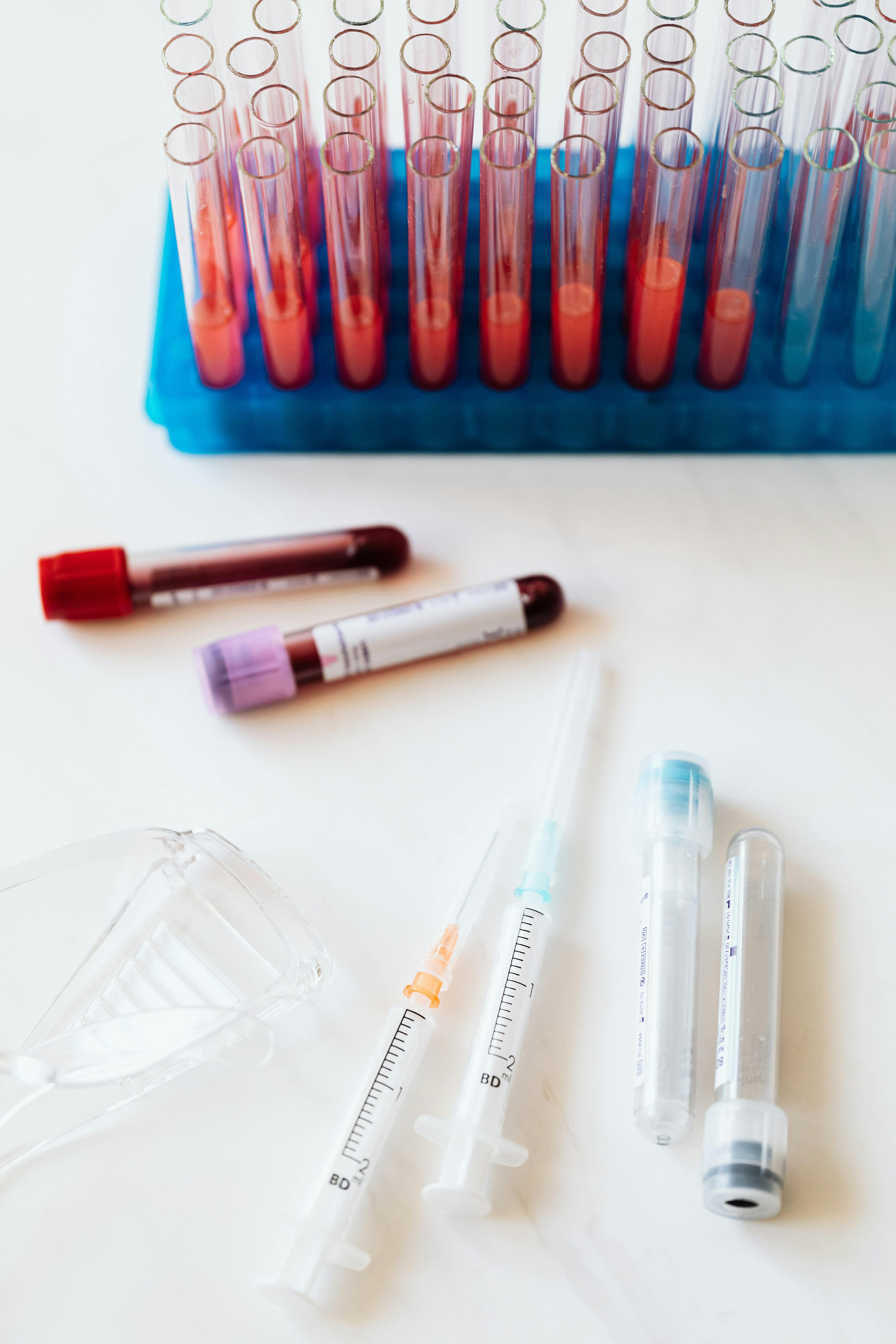Effective Ways to Optimize Your Testing Use for Better Results in 2025
As the technology landscape continues to evolve rapidly, optimizing testing procedures is essential to ensure software quality and performance. In 2025, businesses need to employ innovative strategies to streamline their testing processes, resulting in higher efficiency and reliability. This article discusses effective methods for optimizing testing, covering various aspects such as test design, implementation, and feedback integration. We will provide insights into the most current practices that can enhance your testing strategies, ensuring that both developers and users benefit from high-quality software products.
Benefits of optimizing testing processes include improved software quality, reduced time to market, and better alignment with user requirements. By implementing these strategies, teams can foster collaboration, enhance productivity, and ultimately achieve superior testing outcomes. This article serves as a roadmap to understanding and applying essential techniques in test management, documentation, and automation.
Key takeaways include an understanding of test planning methods, best practices for test environments, and insights into performance and security testing approaches. Let’s dive deeper into each facet of optimizing your testing processes.
Essential Strategies for Test Planning and Design
Understanding Test Methodologies
The first step in optimizing your testing process is to have a solid understanding of various test methodologies. Choosing the right methodologies, such as Agile, Waterfall, or V-Model, can greatly influence the efficacy of your tests. Each methodology offers different advantages depending on project requirements and environments.
For example, Agile methodologies promote continuous integration and testing, allowing teams to identify defects early on. In contrast, the Waterfall model may be beneficial for projects requiring extensive documentation and structured phases. Deciding which approach to use will set the foundation for an effective test design.
Moreover, particular attention should be given to the Integration Test and Regression Test methodologies, which ensure new features do not disrupt existing functionality. These methodologies incorporate best practices for coverage and documentation, ensuring thorough testing across the lifecycle.
Designing Comprehensive Test Scenarios
Once the methodology is established, designing comprehensive test scenarios is crucial. Test scenarios should encompass various user paths, ensuring that the software performs optimally under different conditions. Using the Testfalldefinition framework to define clear scenarios helps in avoiding ambiguity and provides a strong foundation for test execution.
Engaging stakeholders in the test scenario design can yield valuable insights, ensuring that every use case is addressed. This practice effectively enhances Testabdeckung, guaranteeing coverage of all critical functionalities. Furthermore, utilizing tools for traceability will allow teams to monitor which tests correspond to specific requirements, streamlining the testing process.
Implementing Efficient Test Documentation
Test documentation is an indispensable part of the testing process. Effective documentation should include test plans, test cases, and results. By standardizing the Testdokumentation process, teams can maintain clarity and consistency throughout the project.
Moreover, utilizing Testmanagementsoftware can facilitate better documentation practices. These tools enable collaboration among team members and provide a centralized repository for all testing artifacts, hence improving accessibility.
Common pitfalls in documentation, such as lack of clarity, incomplete test scenarios, or poorly defined outcomes, can lead to inefficiencies in testing. However, with structured Testprotokolle and clear guidelines, teams can minimize these issues and enhance overall test quality.
Optimizing Test Execution for Performance
Utilizing Test Automation
Test automation significantly enhances the efficiency of the testing process. Automated tests can be run frequently and consistently, allowing teams to address issues more proactively. Understanding which tests to automate is essential; typically, repetitive tests and those requiring extensive data sets are ideal candidates for automation.
Incorporating automation tools like Selenium for web applications or Appium for mobile tests increases test coverage and performance while reducing manual effort. However, teams must remember that certain complex tests, such as exploratory or usability tests, may still require human intervention due to the nuanced nature of user interactions.
It’s crucial to continuously monitor and improve your automation efforts. Regularly updating automated test cases and maintaining the Testausführung framework will help in adapting to new software releases and ensure high-quality outcomes.
Establishing a Robust Test Feedback Loop
Creating an effective feedback loop is vital to achieving clarity and improving the testing process. Integrating automated feedback mechanisms allows for quick identification of issues, enhancing the speed and accuracy of bug identification.
Encouraging team members and stakeholders to provide feedback on test cases and execution helps in identifying gaps in the testing strategy. Implementing regular Testberichte generieren can create transparency around the testing process, allowing for more informed decision-making.
Leveraging performance metrics through Testmetriken, teams can analyze trends and make data-driven adjustments to testing protocols. Adapting to this feedback not only optimizes current processes but also strengthens future testing endeavors.
Improving Test Environment Management
Creating a Controlled Test Environment
A well-structured test environment is essential for accurate testing. This includes setting up hardware, software, and network configurations that mimic real-world conditions. A controlled test environment allows teams to achieve consistent results and facilitates error identification through known variables.
Utilizing tools for Testmonitoring can assist in tracking performance in real-time and help in identifying anomalies in behavior. Ensuring that the Testumgebung reflects production conditions as closely as possible is crucial for reliable testing outcomes.
Moreover, incorporating innovative practices such as containerization can enhance test environment management. Tools like Docker allow teams to manage dependencies easily, resulting in less variability between environments and allowing for more accurate performance testing.
Implementing Security Testing Techniques
In today’s cybersecurity landscape, prioritizing security testing is essential. Integrating Securitytests into the mainstream testing process ensures that vulnerabilities are identified and addressed early in development.
Employing techniques such as penetration testing, vulnerability assessments, and compliance tests can help businesses mitigate risks effectively. The implementation of security frameworks helps maintain compliance and enhances overall software robustness.
Constantly updating security measures and involving security teams during the testing process fosters a culture of quality and assurance. A joint effort between development and security ensures that testing remains comprehensive and evolves with emerging threats.
Maximizing Test Resources and Team Collaboration
Effective Resource Allocation for Testing
Properly managing Testressourcenzuteilung is crucial for maximizing the efficiency of testing operations. Allocating resources based on project priorities ensures that critical areas are tested thoroughly without prolonging timelines.
Employing Testtools effectively can also streamline resource management. Adopting tools for task tracking, collaboration, and communication among team members enhances productivity. Teams can manage workloads more efficiently and have clear visibility of ongoing tasks.
Additionally, balancing manual and automated testing resources will optimize results. While automation significantly increases efficiency, skilled testers add invaluable insights, especially for complex testing scenarios.
Promoting Collaboration Among Test Teams
A culture of collaboration among test teams is key to successful software testing. Encouraging proactive communication and collaboration leads to better knowledge sharing and problem-solving, ultimately enhancing Testdurchführung.
Regular meetings and collaborative tools facilitate discussions about Testfeedback, updates on test coverage, and outcomes. This synergy magnifies collective expertise and focuses on achieving shared objectives.
Moreover, fostering a supportive environment encourages continuous learning and innovation. Teams can collaborate on developing new testing strategies that align with evolving technologies and user needs.
Measuring and Improving Test Effectiveness
Identifying Key Test Metrics
Measuring Testperformance through defined metrics provides insights into process efficiency. Identifying relevant metrics like defect density, test case pass rate, and test execution time is crucial for assessing overall effectiveness.
Establishing performance benchmarks enables teams to evaluate their progress and identify areas for improvement. Utilizing data analytics for Testauswertung can provide deeper insights into testing effectiveness, empowering teams to make informed decisions.
Selecting the right metrics ensures that teams are not only focusing on the quantity of tests but also the quality and impact on end-user satisfaction.
Continuous Improvement Through Review Processes
Implementing regular review processes is essential for continuous improvement of testing strategies. Retrospective evaluations help analyze what worked well and what didn’t during the testing cycles.
Teams should consistently revisit their Teststrategien and be willing to adapt based on evolving project requirements and feedback. This agility allows for rapid enhancements in testing practices, resulting in more effective outcomes over time.
Creating a culture of review ensures that lessons learned are integrated into future testing cycles, driving the cycle of improvement.
Q&A Section
What is the best way to start optimizing my testing procedures?
Start by analyzing your current testing methodologies and identify areas that require improvement. Create a structured plan that focuses on documentation, automation, and feedback mechanisms.
How can I measure the success of my testing optimization efforts?
Use metrics such as defect density, test pass rates, and execution times to evaluate the effectiveness of the testing process. Regular benchmarking against these metrics can help identify progress.
What role does team collaboration play in testing optimization?
Team collaboration fosters knowledge sharing and enhances problem-solving capabilities, which contributes significantly to optimizing test practices and outcomes.
Why is security testing important in the optimization process?
Security testing identifies vulnerabilities early on, ensuring the software is robust enough to withstand potential cyber threats. It is vital to maintain user trust and compliance with regulations.

How can I efficiently manage test environments?
Creating a controlled test environment that mirrors production conditions and using tools for monitoring performance enables effective management of testing resources, reducing risks.

Conclusion
Optimizing your testing procedures in 2025 is crucial for achieving effective software quality and meeting user expectations. Implementing the strategies discussed can lead to improved performance, better collaboration, and overall efficiency. By continually evolving your testing methodologies and practices, you’ll be well-equipped to navigate the complexities of the software landscape and deliver products that resonate with your audience.
